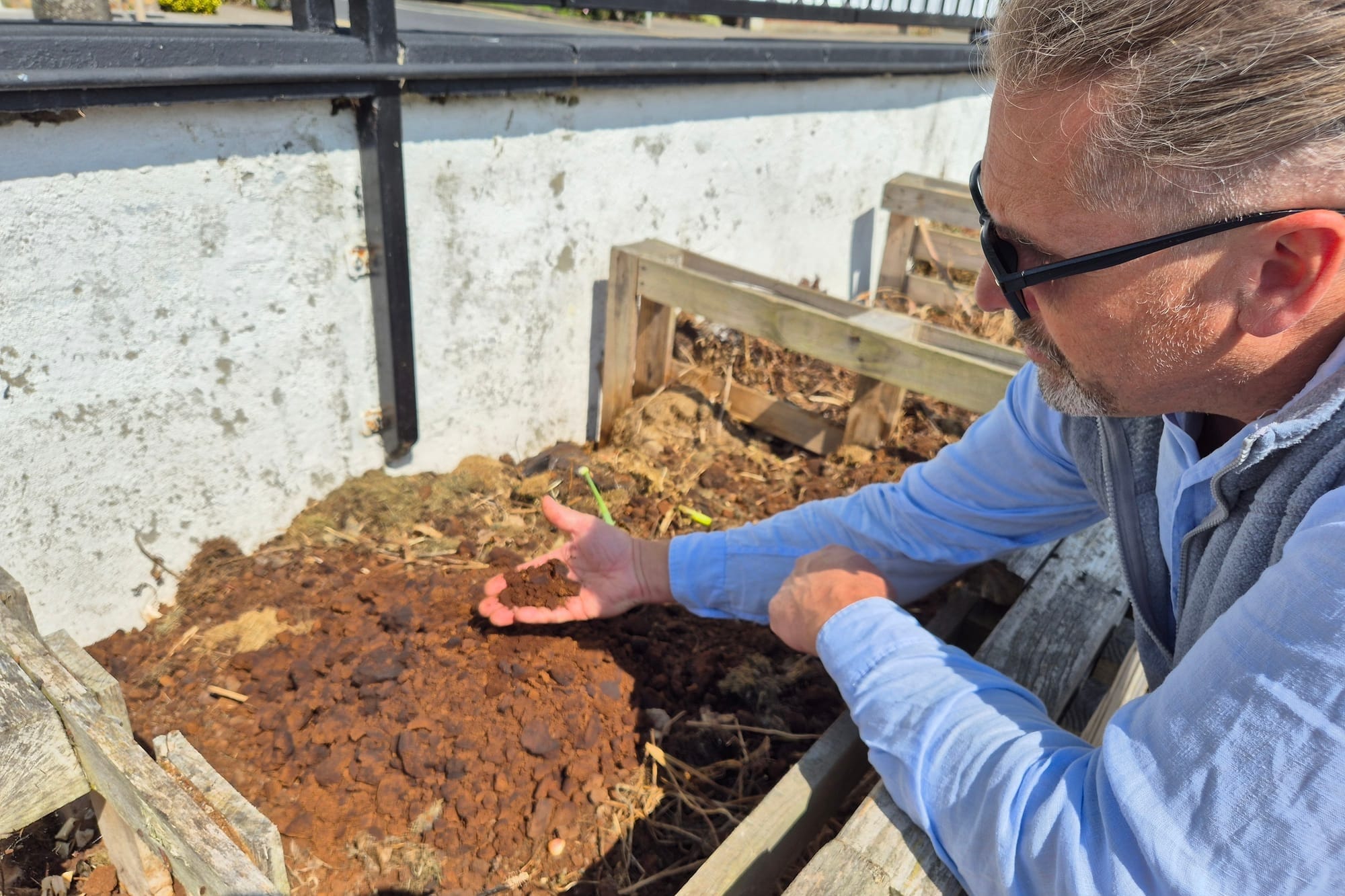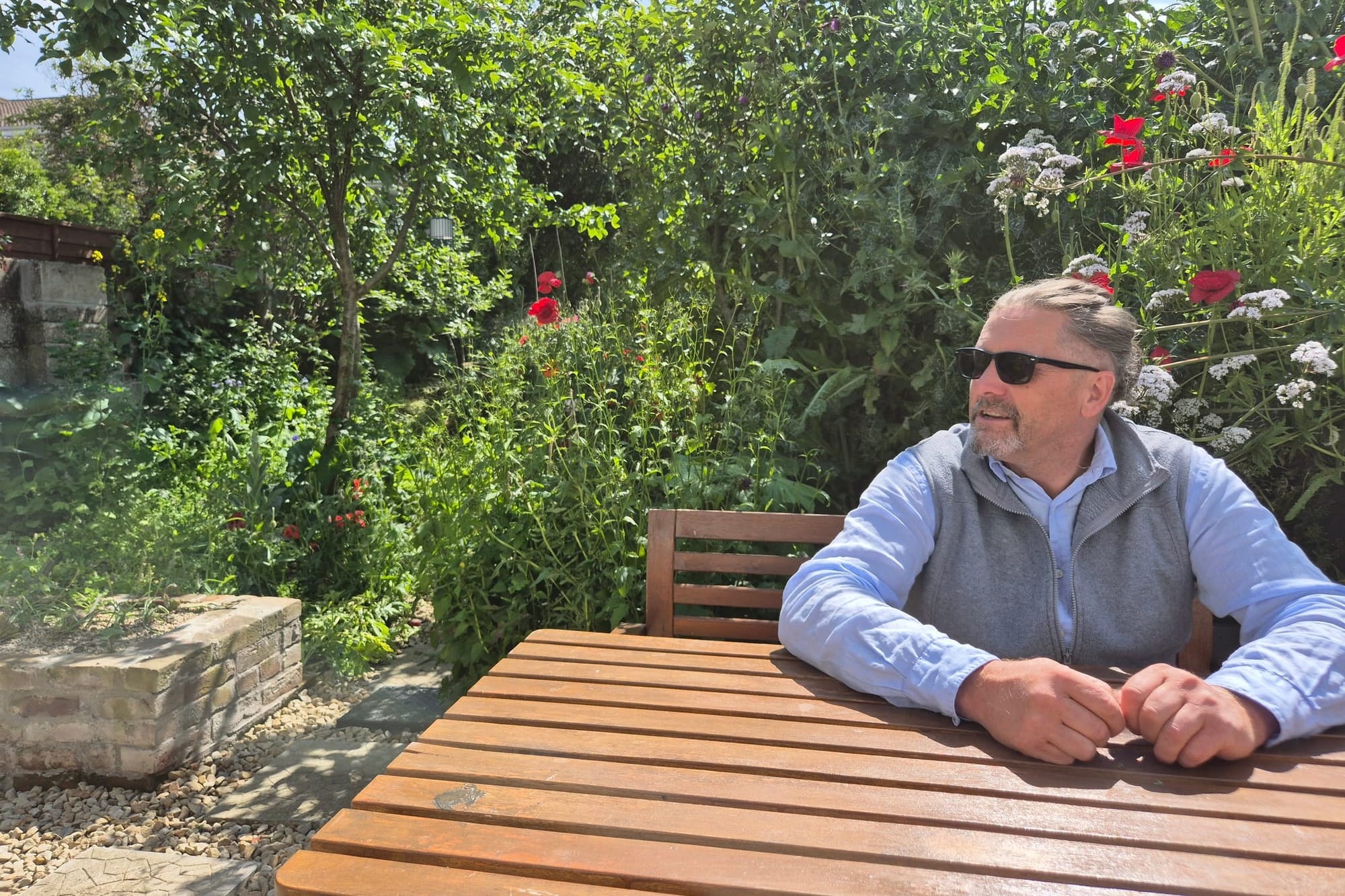Nobody caught illegally dumping yet by new north inner-city CCTV
But the scheme is a success, said a council official's report, as that shows the cameras are a deterrent.
“People come in, take some spuds, some onions, whatever it is. It all keeps ticking along.”

A Dublin Bus hisses down Collins Avenue, past the entrance to the Whitehall Colmcille GAA clubhouse.
Women chat over hot drinks and sandwiches on the outdoor benches of the club’s café, Puck Lane.
People potter in and out of the clubhouse, many in branded club tracksuits.
And, all along one side of the big square car park are planters stretching for 30m and bursting with greenery: mint, potatoes, cabbages, onions, parsley and thyme.
The wall behind the planters is itself brightly painted with flowers and birds, depicting each of the four seasons.
“I think if you paint anything with pretty flowers, anti-social behaviour disappears,” says Aaron Foley, with a chuckle.
Foley is the biodiversity officer for Dublin Community Growers.
This car park garden is a project of his and a wider group of growers – and something he thinks should be common in tarmaced landscapes throughout the city and country, he says.
Kate O’Brien, assistant parks and landscape officer at the council, said there is huge demand for council allotments around Dublin.
Wait times for a plot can vary by site, she said, but demand continues to be “very high” and, depending on the allotment, “lists may be closed”.
Community gardens are a bit easier to access, she said.
Those gardens are volunteer-run with membership open to local residents, they said. “You can show up on scheduled volunteer days.”
Still, public demand for somewhere to grow food – be it allotments or community gardens – vastly outpaces the spaces available in Dublin and elsewhere.
The car-park project is a perfect example of a circular economy in action, Foley says.
Coffee grounds from the Puck Lane café go into the composters, he says. As does manure from the nearby Childvision National Education Centre for Blind Children, who keep horses for equine therapy.
He and others make regular runs in a sprinter van to collect bags of leaves from around the area.
And Puck Lane uses some of the end products – like the onions and fresh mint– in their products.

It brings a great bit of biodiversity to the club, says Whitehall Colmcille GAA Club secretary, Diarmuid Murphy. “It’s always great to be able to keep anything out of landfills.”
He says he helped build the planters and get the team of growers set up with what they needed. Chadwicks donated timber for the planters, he says.
The car park is an ideal spot for it, he says. The club pitches don’t have the same day-to-day footfall as the clubhouse and the allotment “needs a bit of looking after”.
The project has worked out really well, he says. “There were superb sunflowers there last year. It just looked so well.”
Murphy says another boost for the club is that the car-park allotment brings in people who might not have an interest in GAA, but are part of the community nonetheless.
“It can be harder in Dublin to build community spirit,” he says. “In rural places, the GAA club is a community hub even if you’re not interested in sport.”
So, he says, it’s great to have something beyond the sporting that brings people in and together.
Members of the club’s Men’s Shed get involved. As do people with Alzheimer’s who meet in the club once a month for the “Making Memories Café”.
Foley says he finds that young people in the area are attracted to the idea of allotments and growing their own food when it’s sold as counter-cultural and rebellious.
“We tell them, this goes against the big corporate kind of thinking,” he says.
“Corporations want us all buying our food from the same shop, from the same manufacturer. But we’re here making food from essentially nothing,” says Foley.
While many people work and tend to the garden, Foley says anyone is welcome to come and help themselves to some food.
“We love to see it,” he says. “People come in, take some spuds, some onions, whatever it is. It all keeps ticking along.”
Not far from the GAA club, Foley lives in the house he grew up in. Although, he has made some changes since.
Through the cosy, inviting hallway and living room, a back door opens onto a wild sanctuary.
“We’re in this crisis with bees. Their numbers are getting smaller and smaller every year,” he says.
“This garden was built with that in mind. It’s about building a sustainable habitat for them and other little creatures,” Foley says.
According to the All-Ireland Pollinator Plan 2021 – 2025, across this island, 30 of 99 bee species are at risk of extinction.
From the roof of Foley’s house, a long white pipe feeds rain water into his flower beds. Among the plant life are several ponds.
Foley points to one. It's full of frogs and tadpoles, he says.
Around the bank of the pond are layers of rotted wood for the insects to make nests, he says.
Mason bees, leafcutter bees and “lots of other insects” make nests in the wood and holes in the ground, he says.
On the other side of the pond, just out of arm's reach, lives a cherry tree with its ripening fruit.
“The birds love them,” he says.
When Foley was in his early 30s, he began suffering with terrible hip pain, he says.
He faced the prospect of surgical intervention, something he was keen to avoid, he says.
It was then that he became deeply fascinated with herbalism.

Foley is by no means dismissive of modern medicine, he says. But he developed a keen interest in what herbs and plants can do for both physical and mental well-being.
He loves to learn about the natural remedies that our ancestors used.
Thanks to modern science, we now know what those chemical ingredients are that had those effects hundreds, or even thousands of years ago, he says – while our ancestors had to figure it out for themselves.
“When something works,” he says, “human beings tend not to throw it away.”
He holds a plant in his hands, with silvery-green fluffy leaves. “Take this one, Artemisia vulgaris, also known as mugwort,” he says.
From China to Ireland, he says, people believed it would repel evil spirits, because it kept people from falling sick. English legends tell that John the Baptist wore some on his person for protection in the wilderness.
Now, scientists suggest that it actually does serve as a repellent for insects like mosquitoes, and by keeping them away helps protect people from diseases they carry such as dengue fever, yellow fever and malaria, he says.
Foley isn’t exactly sure how many species of plants are in his garden, he says. He lost count at around 100.
The car park allotment in Whitehall Colmcille GAA Club is one stop along the “Collins Community Corridor”, Foley says.
The idea is that pollinators can stop off there, shoot on to the Piggery Garden in Beaumont and then to Mucky Lane, and maybe even stop off in Foley’s own back garden along the way.
What has been done in this GAA car park in a dense Dublin neighbourhood can be done anywhere, with a bit of will, Foley says.
“We really need projects like this more widespread,” he says, “and we needed them yesterday.”
Funded by the Local Democracy Reporting Scheme.